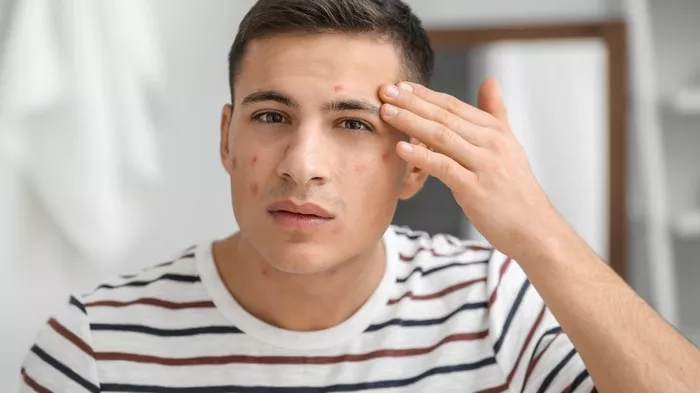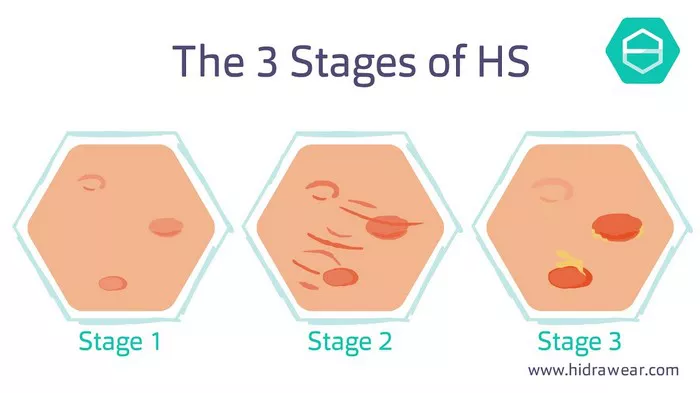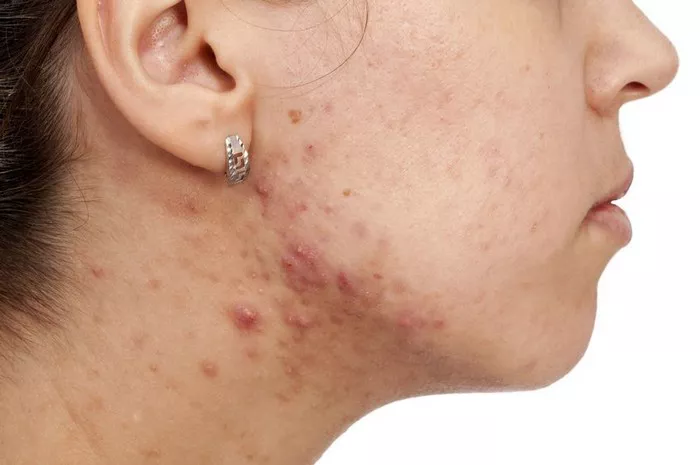Hidradenitis suppurativa (HS) is a chronic skin condition that can cause significant pain and discomfort. Understanding why HS is so painful involves exploring its causes, symptoms, and the biological mechanisms at play. This article will break down these aspects in a clear and straightforward manner.
What is Hidradenitis Suppurativa?
Hidradenitis suppurativa is a skin disease characterized by the formation of painful lumps and abscesses. It primarily affects areas where skin rubs together, such as:
- Underarms
- Groin
- Buttocks
- Breasts
These painful lesions can rupture, leading to drainage and the formation of tunnels under the skin, known as sinus tracts. The condition can significantly impact a person’s quality of life.
SEE ALSO: What Causes Eczema on the Scalp in Adults?
The Painful Symptoms of HS
The pain associated with HS can manifest in various ways:
1. Tender Lumps
The initial symptom of HS is the appearance of tender lumps or nodules. These lumps can be:
- Painful to touch
- Swollen
- Warm to the touch
These tender lumps are often the first sign of an HS flare-up, and they can be quite uncomfortable.
2. Abscess Formation
As the condition progresses, these lumps can develop into abscesses. An abscess is a collection of pus that forms due to infection. The presence of an abscess can lead to:
- Intense pain
- Increased swelling
- Fever in some cases
Abscesses may require drainage, which can be a painful procedure.
3. Drainage and Discharge
Once an abscess ruptures, it may drain pus or fluid. This drainage can relieve some pressure but can also be painful due to:
- Skin irritation
- Ongoing inflammation
The constant cycle of lump formation, rupture, and drainage contributes to the overall pain experienced by individuals with HS.
4. Sinus Tracts
In chronic cases of HS, sinus tracts may develop. These are small tunnels that form under the skin and can lead to:
- Ongoing pain
- Persistent drainage
- Scarring
The presence of sinus tracts complicates the healing process and adds to the pain.
Understanding the Causes of Pain in HS
The pain associated with HS can be attributed to several factors:
1. Inflammation
One of the primary causes of pain in HS is inflammation. The body responds to injury or infection with inflammation, leading to:
- Redness
- Swelling
- Pain
In HS, the immune system mistakenly targets hair follicles, causing chronic inflammation in affected areas.
2. Infection
Secondary infections can complicate HS and contribute to pain. When the skin lesions become infected, the body responds with more inflammation, leading to:
- Increased pain
- More severe symptoms
3. Skin Damage
Repeated flare-ups and abscess formation can lead to skin damage. The constant cycle of inflammation and healing can result in:
- Thickened skin
- Scarring
- Discomfort
Damaged skin can be more sensitive and painful, exacerbating the overall pain experience.
4. Nerve Sensitivity
Chronic conditions like HS can alter how the nervous system perceives pain. This phenomenon is known as central sensitization. In HS, the affected areas may become:
- Hyper-sensitive
- More painful than expected from the visible symptoms
This altered pain perception can make everyday activities uncomfortable.
Psychological Impact of HS Pain
The pain of HS is not just physical; it can also have significant psychological effects. Living with chronic pain can lead to:
1. Anxiety
The unpredictability of HS flare-ups can create anxiety. Individuals may worry about:
- Future flare-ups
- Social situations
- Impact on daily life
2. Depression
Chronic pain is closely linked to depression. The constant discomfort can lead to feelings of helplessness and frustration. This can create a vicious cycle, as depression can also increase the perception of pain.
3. Isolation
Due to the nature of the condition, individuals with HS may withdraw from social interactions. They might feel embarrassed about their symptoms, leading to:
- Feelings of loneliness
- Reduced quality of life
Managing Pain in Hidradenitis Suppurativa
While there is no cure for HS, there are ways to manage pain and improve quality of life:
1. Medical Treatments
Several medical treatments can help reduce pain and inflammation, including:
Topical treatments: These include medicated creams or ointments to reduce inflammation.
Oral medications: Antibiotics or anti-inflammatory drugs can help manage symptoms.
Biologics: These are advanced medications that target specific parts of the immune system to reduce inflammation.
2. Lifestyle Changes
Making certain lifestyle changes can also help manage pain:
Weight management: Maintaining a healthy weight can reduce friction in affected areas.
Avoiding triggers: Identifying and avoiding personal triggers can help minimize flare-ups.
Wearing loose clothing: Loose, breathable fabrics can help reduce irritation.
3. Pain Management Techniques
Various pain management techniques can also be beneficial:
Heat therapy: Applying warm compresses can soothe painful areas.
Cold therapy: Ice packs can reduce swelling and numb pain.
Relaxation techniques: Mindfulness, meditation, and yoga can help reduce stress and improve pain perception.
Seeking Support for HS
Living with HS can be challenging, but support is available:
1. Support Groups
Joining a support group can provide emotional support and practical advice from others experiencing similar challenges.
2. Professional Counseling
Speaking with a mental health professional can help address anxiety or depression related to chronic pain.
3. Educational Resources
Learning more about HS can empower individuals to better manage their condition and advocate for their health needs.
Conclusion
Hidradenitis suppurativa is a painful and complex condition that can significantly affect an individual’s quality of life. Understanding the causes of pain, including inflammation, infection, and psychological factors, is crucial for effective management. While there is no cure for HS, a combination of medical treatments, lifestyle changes, and pain management techniques can help alleviate symptoms and improve overall well-being. Seeking support from professionals and connecting with others can also make a significant difference in coping with this challenging condition.
Related topics:
























